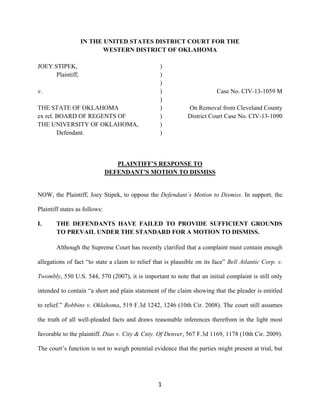This document is the plaintiff's response to the defendant's motion to dismiss. It argues that the defendant has not provided sufficient grounds for dismissal under the motion to dismiss standard. It asserts that the plaintiff's complaint alleges an ongoing series of exchanges regarding requests for identifiable parking citations issued to student athletes, not just five specific instances. It also argues that the requested records (parking citations) do not qualify as educational records protected by FERPA, as they are maintained separately and not as part of students' permanent files. Even if some records cannot be disclosed due to FERPA, the university still has an obligation to provide accessible portions of the requested records.








